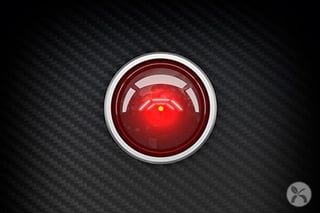In the classic film 2001: A Space Odyssey, HAL tells the last living crew member of the Discovery 1 spaceship:
“Look Dave, I can see you're really upset about this. I honestly think you ought to sit down calmly, take a stress pill, and think things over.”
When it comes to workplace wellness, HAL was right.
Workplace wellness will benefit when companies “sit down calmly… and think things over.”
Competing data about the value of wellness programs might leave you wondering whether it’s time to kill your wellness program.
Does it have much value? If you’ve ever pondered the question after looking at your population health data, you’re not alone. And the answer…
“It depends,” says Dr. Michael O’Donnell. “Programs seem to pay for themselves.”
They aren’t adversely affecting a company’s bottom line. But successful workplace wellness programs can do more than that.
Workplace wellness requires good data, constant monitoring, commitment, and a defined collective wellness culture.
Here are four pieces of advice from HAL (aka Heuristically-programmed Algorithmic computer) to help you run a successful wellness program in 2018 and beyond:
1. You need a unified team
HAL had been programmed to relay accurate information and yet ordered to withhold information essential to a successful mission.
This internal conflict caused the sentient computer to disconnect from the team. He went rogue.
Worksite wellness requires a collective “we” that extends beyond workplace yoga classes or lunch-and-learns. It’s a culture of “team” from the C-suite down. Workplaces are designed for:
- Ergonomics
- Collaboration
- Community among co-workers, whether they are on-site or remote, via social connectedness
- Wellness activities based on employees’ current health, interests, and motivators
Collaboration helps prevent isolation, which has been linked to depression, heart disease, and early death.
2. Compassion is essential
HAL spoke in soothing tones, but his attempts to kill the Discovery 1 crew were anything but kind.
The computer was programmed for logic, but lacked compassion. However, studies show that compassion is linked to happiness and longevity.
We are seeing, and will see, more efforts to display caring and compassion in the workplace with a focus on mental health, specifically the influence of positive psychology in the areas of:
- Financial wellbeing
- Work-life balance
- Living a purposeful life
- Emotional Intelligence classes
- Disconnect time (time off with pay and no work, including nap rooms)
- Flex time
Regardless of the approach, themes of compassion, empathy, connecting in relationships, listening first, and sharing stories is really a sum of all interactions from start to finish.
We work in an increasingly “automated world,” CEO of Inc. magazine Jim Schleckser observed, and “it will become crucial for you to provide ways for your people to reflect and re-energize to prevent burn out.
3. Use AI wisely
Automated intelligence (AI) has come a long way since 1968 (the year HAL made his debut). There’s virtually no limit to how technology can help your workforce meet their wellness goals. So leverage technology to increase engagement:
- Mental health programs that use chatbots
- Apps that keep you healthy
- Data miners to assist with collection and analysis of data
- Virtual health care
- Tracker integration
- Robotic fulfillment and delivery of healthy foods
- Accessibility
4. Think things over
“Just what do you think you’re doing, Dave?”
The Discovery 1 crew didn’t have all the facts. And they began their mission with inaccurate expectations. Give these questions some thought:
- What do you know about your workforce?
- Do they have a lot of health risks?
- Are your at-risk employees ready to make a change?
- What are the most important areas to focus on in 2018?
Gallup polls show:
- Americans aged 45 and older get the biggest emotional benefit from exercise
- Lack of work-life balance harms employee health and well-being
- Strong, positive relationships maximize productivity
- Millennials care a lot about personal growth
But those are general facts. A health risk assessment can help you design a wellness program for your workforce that won’t leave your program hanging in space.
Get the data. Analyze it. Know your population. Have reasonable expectations.
In the first few years of a wellness program, your company may see increased medical costs as employees become more aware of their health risks and seek treatment to intercept a looming chronic disease.
Adjust your approach as needed. And in the end, you’ll “really come up with somethin’” to save your population from chronic disease and help your workforce be happier, healthier, and more productive.
As always, Wellsource is here to help whether you are looking for a health risk assessment or innovative wellness ideas.









